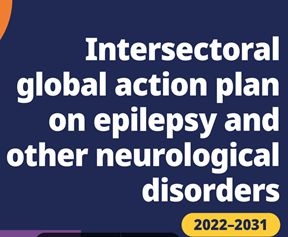Seizure 2018, Vol 64, Editor’s Choice: “Sudden Unexplained Death in Epilepsy: The Neuro-Cardio-Respiratory Connection”
Many still think of epilepsy as a disorder characterised by abnormal discharges in cortical neurons. Despite steadily accumulating evidence, the involvement of subcortical and brain stem structures in ictal physiological changes (and their interictal consequences) is still not widely appreciated. In the cortical interpretation of epilepsy, the autonomic nervous system is a phylogenetically ancient feature of the brain, which largely operates on “autopilot” and is quite separate from the parts and networks of the brain that are of interest to epileptologists. However, this understanding of epilepsy cannot really be upheld. For instance, recent studies have shown ictal effects on serotonergic pathways in the brainstem closely involved in respiratory control (1). Recurrent seizures may lead to persistent changes of interictal functioning of the ascending reticular activating system in the brainstem (2).
My Editor’s Choice selection from the current issue of Seizure, a narrative review by T. A. Manolis et al., demonstrates that the involvement of the autonomic nervous system in epileptic seizures is not just of interest to neuroanatomists or physiologists (3). The close links between ictal cortical discharges and brain networks involved in the control of heart rate, blood pressure and breathing are likely to be highly relevant in the aetiology of Sudden Unexpected Death in Epilepsy (SUDEP). For some time SUDEP has been acknowledged as the commonest cause of death in younger adults with epilepsy (4). Recent evidence demonstrating the absence of any post-mortem signs of drowning in many individuals with epilepsy who died in the bath, suggests that SUDEP may be an even commoner cause of death than once thought (5). The comprehensive overview of the seizure-related changes in the brain which affect the functioning of the autonomic nervous system should help to correct the “corticocentric” view of epilepsy and demonstrates that a wider understanding of this disorder will be needed if we want to stop more people from dying in the context of epileptic seizures in the future.
- Zhan Q, Buchanan GF, Motelow JE, Andrews J, Vitkovskiy P, Chen WC, Serout F, Gummadavelli A, Kundishora A, Furman M, Li W, Bo X, Richerson GB, Blumenfeld H. Impaired Serotonergic Brainstem Function During and After Seizures. J Neurosci 2016;36:2711–2722.
- Englot DJ, Gonzalez HFJ, Reynolds BB, Konrad, Jacobs ML, Gore JC, Landman BA, Morgan VL. Relating structural and functional brainstem connectivity to disease measures in epilepsy. Neurology 2018; 91: 2018 Jul 3;91(1):e67-e77.
- Manolis TA, Manolis AA, Melita H, Manolis AS. Sudden Unexpected Death in Epilepsy: The Neuro-Cardio-Respiratory Connection. Seizure 2019 – PLEASE ADD BIBLIOGRAPHIC DETAILS
- Devinsky O, Hesdorffer DC, Thurman DJ, Lhatoo S, Richerson G. Sudden unexpected death in epilepsy: epidemiology, mechanisms, and prevention. Lancet Neurol 2016;15:1075-88.
- Cihan E, Hesdorffer DC, Brandsoy M, Li L, Fowler DR, Graham JK, Donner EJ, Devinsky O, Friedman D. Dead in the water: Epilepsy-related drowning or sudden unexpected death in epilepsy? Epilepsia 2018;59:1966-72.
Seizure 2018, Том 64, Вибір редактора: "Раптова Непередбачувана Смерть при Епілепсії: Нейро-кардіо-респіраторне З'єднання”
Багато хто все ще вважає, що епілепсія – це розлад, який характеризується аномальними розрядами в кортикальних нейронах. Незважаючи на постійне накопичення доказів, участь субкортикальних і стовбурових структур головного мозку в іктальних фізіологічних змінах (та їх інтеріктальні наслідкі) досі не отримала широкого визнання. У кортикальній інтерпретації епілепсії вегетативна нервова система є філогенетично більш давньою системою головного мозку, яка значною мірою працює на "автоматично" і абсолютно відокремлена від часток і мереж мозку, які представляють інтерес для епілептологів. Проте, таке розуміння епілепсії не може бути підтверджено. Наприклад, нещодавні дослідження показали іктальний вплив на серотонінергічні шляхи в стовбурі головного мозку, безпосередньо залученому до контролю дихання (1). Напади, що повторюються, можуть призвести до стійких змін інтеріктального функціонування висхідної ретикулярної активаційної системи в стовбурі мозку (2).
Мій редакційний вибір із поточного випуску «Seizeres», а саме описового огляду Т. A. Manolis et al., демонструє, що залучення вегетативної нервової системи в епілептичних нападах представляє інтерес не тільки для нейроанатомів або фізіологів (3). Тісний зв'язок між розрядами кори головного мозку та мережами головного мозку, які беруть участь у контролі серцевого ритму, артеріального тиску та дихання, можуть бути дуже актуальними в етіології раптової непередбачуваної смерті при епілепсії (SUDEP). Протягом деякого часу SUDEP був визнаний найпоширенішою причиною смерті серед молодих людей з епілепсією (4). Нещодавні докази, які демонструють відсутність будь-яких посмертних ознак утоплення у багатьох людей з епілепсією, померлих у ванні, свідчать про те, що SUDEP може бути навіть більш поширеною причиною смерті, ніж колись вважали (5). Всебічний огляд змін у мозку, пов'язаних з нападами, які впливають на функціонування вегетативної нервової системи, повинен допомогти виправити «кортикоцентрический» погляд на епілепсію і продемонструвати, що більш широке розуміння цього розладу буде необхідно, якщо ми хочемо зменшити кількість людей від смерті в контексті епілептичних нападів у майбутньому.
Переклад Анна Войтюк
https://doi.org/10.1016/j.seizure.2018.12.007





